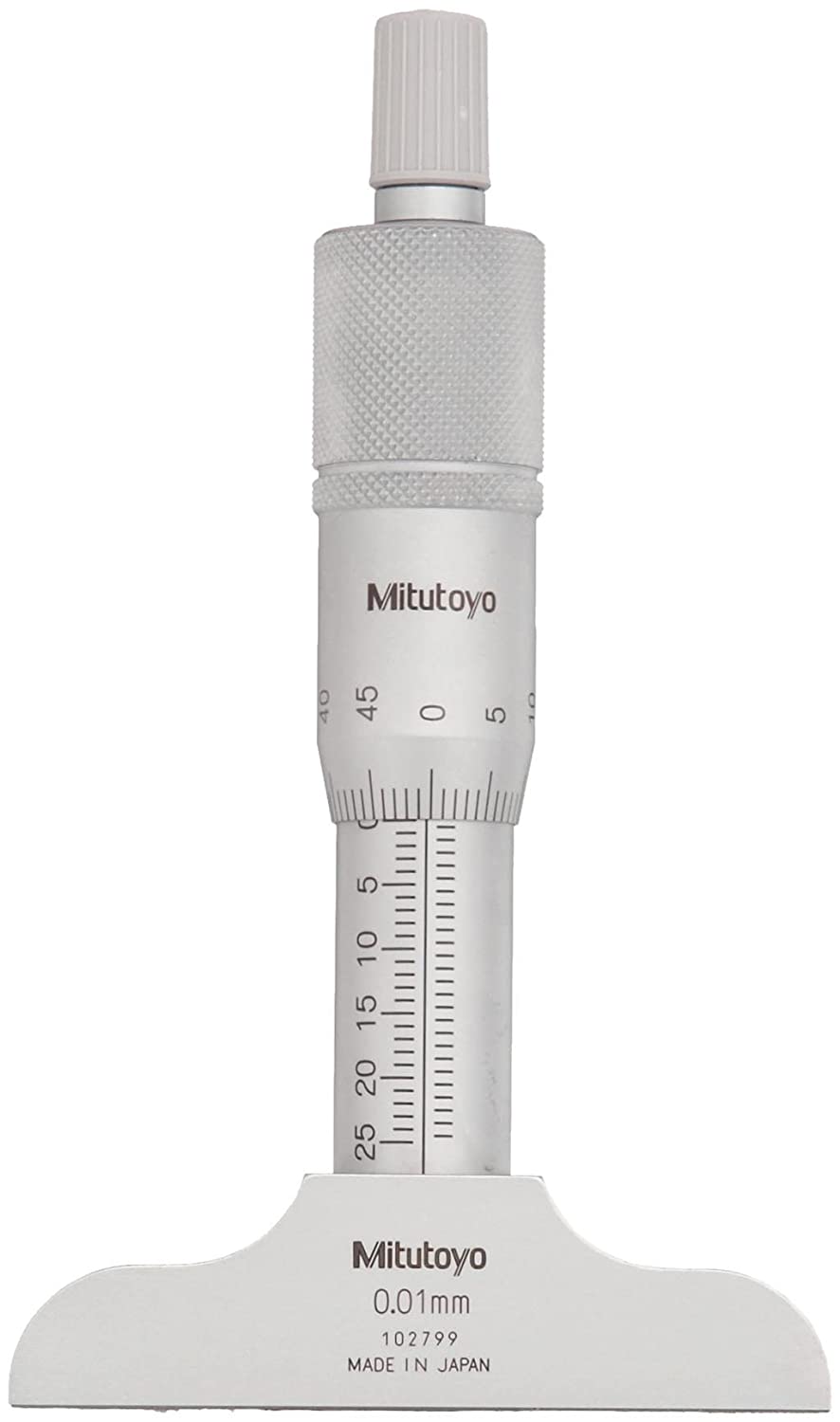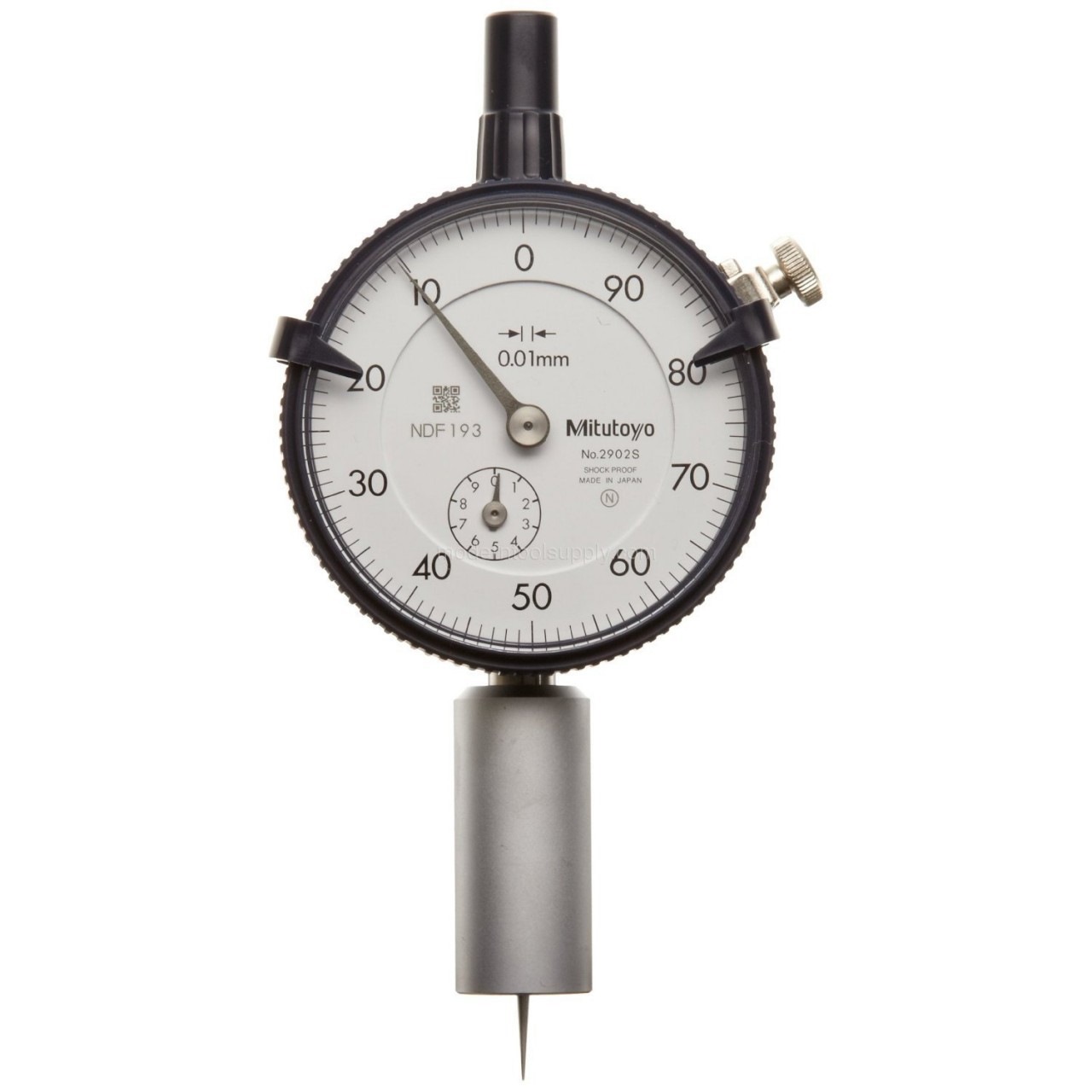
We sell sensitive test and measurement equipment here on Ebay. Find us at Bullseye Calibration in Bloomfield, Connecticut to discuss the machine. If you would like to discuss calibrating your depth gauge, please get in touch with Cutwel today.Please email if you have any questions or would like to speak with someone in person. However, for most practical workshop uses calibration should not be required. In theory, it is possible to calibrate depth gauges.
#Mitutoyo depth gauge full
Also protected against full water immersion for up to 30 minutes at depths between 15cm and 1 metre. IP67: Dust tight with no ingress of dust for 2 to 8 hours. Also protected against jets of water with limited ingress permitted. IP65: Dust tight with no ingress of dust for 2 to 8 hours. An IP rating consists of 2 numbers: the first describes the level of protection against the intrusion of foreign bodies to components within the tool, whereas the second details the extent of protection against moisture.ĭepth gauges are supplied in a variety of IP classes including: IP (Ingress Protection) is an internationally recognised standard of measuring the effectiveness and level of protection against dust, water, coolant, steam and other external sources of damage. Mitutoyo depth gauges feature advanced functionality, premium build quality and high accuracy for inspection-grade measuring applications. Depth gauges from Insize are perfect for general workshop applications and feature a comprehensive range of sizes, styles and accessories. What brands of depth gauges do we supply?Ĭutwel supply dial depth gauges, vernier depth gauges, digital depth gauges, digital depth micrometers and vernier depth micrometers from market leading measuring tool supplier Mitutoyo and Insize.


Digital indicators, by virtue of its numerical readout, provide more accurate measurements than dial indicators and eliminates any human error encountered by manually reading the scale. Naturally, dial indicators with a 0.01mm graduation will be more accurate than ones with 0.1mm. On dial depth gauges or vernier depth gauges, graduation indicates the increment by which the scale increases, which could be either 0.1mm or 0.01mm.

Mitutoyo digital depth gauges feature their ABSOLUTE system, meaning you don’t have to reset the origin after switching on.Īccuracy can also vary greatly based on the model. Many feature data output (either through RSC32/USB or built-in wireless connectivity) into statistical measurement systems and automatic power off. Most depth gauges are made of a stainless steel substrate for protection in general workshop conditions.ĭigital depth gauges have the most features present. Depth micrometers are used predominantly in inspection settings as they are much more accurate than depth gauges.ĭepending on the type of depth gauge, different features are present. What is the difference between a depth gauge and a depth micrometer?Ī depth micrometer is used to measure depth whereas depth gauges just check or ‘gauge’ depth. Similarly, extension rods increase the depth range in which a gauge can measure. Certain thread gauge ranges also feature interchangeable bases, with extension bases available for situations where a wider base is required. Miniature depth gauges are perfect for precision small hole depth measurements. Vernier hook depth gauges feature a hook for measuring between a component face and the underside of grooves. Various types of depth gauges are available to cover different applications. Dial and vernier gauges are also supplied with different graduations depending on the level of accuracy required.

As stated, readouts are available in vernier, dial or digital variants. What different types of depth gauge are there?įor the most part, depth gauges conform to a uniform layout wide base with a long scale which descends into a hole until it reaches the floor. Depending on the type of depth gauge, this scale would be read manually (vernier or dial) or on a digital readout. The scale would then be pushed (via a thumb roller or by hand) down to the base of the hole where the scale would be read. Standard depth gauges have a wide base which allows the gauge to rest on a surface whilst the reading took place. A common application would be to gauge whether a hole is drilled to the correct required depth. A depth gauge is used to gauge the hole depth on a feature, groove, drilled hole, workpiece edge or any other required depth measurement.


 0 kommentar(er)
0 kommentar(er)
